
to 1714,
Offshore flag of the Electorate (merchant flag),
Source, by: Landesmuseum Emden



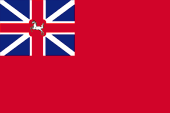
1727–1801,
Flag of the Electorate,
Source, by: World Statesmen



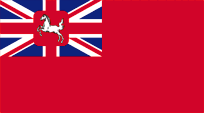
1801–1810 Flag of the Electorate,
1814–1837 Flag of the Kingdom,
Source, by: World Statesmen



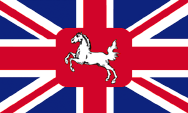
1801–1837
Pilot flag of Hanover,
Source, by: Ostfriesisches Landesmuseum Emden



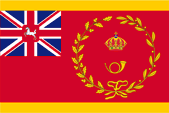
1801–1837
Postal flag of Hanover,
Source, by: Ostfriesisches Landesmuseum Emden




1837–1866
Flag of the Kingdom,
Source, by: Flags of the World



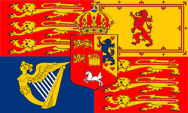
1814–1866
Flag of the King,
Source, by: Welfen




1873–1934
Flag of the Prussian province,
Source, by: Flags of the World



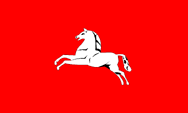
23rd of August in 1946 to 1st of November in 1946
Flag of the State of Hanover,
Source, by: Königreich Hannover



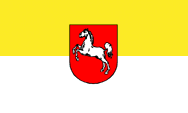
since 1952
Flag of the former Hanoverian territories within the German federal country of Lower Saxony,
Source, by: Königreich Hannover



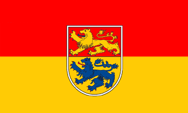
to 2001
Flag of the former District of Hanover,
Source, by: flaggenkunde.de





As colours of the country (Landesfarben) were initialy used the colours red and white, derived from the white "Saxons Ross" on red ground. The Saxons Ross was taken over by the Guelphs (Welf) in 1361, and appeared in the flags or coats of arms of their territories, the Duchy of Brunswick and the Electorate of Brunswick-Lüneburg (later called Electorate and Kingdom of Hanover). The flags of Hanover were initially single coloured red, and showed a tall "Saxons Ross" in the middle of the flag on a stylized little green land. This flag was actually the symbol of the Guelph dynasty, which ruled the country. However, it was tolerated by the monarchs, as civil or merchant flag, and was unofficially used into the 19th century. At the naval flag the Saxon Steed appeared in the upper canton so that the ship was perfectly to identify even with no wind.
Between 1714 and 1837 Hannover was bond with Great Britain and Ireland in personnel union. That means that the sovereign of Hannover was as well the sovereign of Great Britain and Ireland. Hannover was governed from London. In that times Hannover used a single-coloured red flag with the British Union Jack in the upper staff quadrant. In the middle of the Union Jack was placed a red field with the white "Saxons Ross". This regulation brought to the Hanover trade great advantages, because all ports of the British Empire were fully open to the ships of Hanover.
After the end of the personal union with Great Britain and Ireland King Ernest August of Hannover – the brother of the last Guelph King of Great Britain and Ireland – officially itroduced the colours yellow and white. These are the colours of the Guelph Dynasty in the genealogy of Calenberg-Goettingen-Grubenhagen. Since 1866, as Hannover became a Prussian province, it was no more allowed to use that colours. Not until 1873 – two years after the establish of the German Empire – Prussia accepted yellow and white as colors of it's 'Province of Hannover'.
From 1875, the provinces of Prussia could largely operate in self-governing. There was a provincial parliament and a provincial government (Provincial Committee). Each province had its own colors (Landesfarben), which were also used as flag, and they had also their own coat of arms. If the provincial governments put for official purposes (official flag) their coats of arms on a flag with the provincial colors is not handed down beyond doubt and not for all provinces.
Another incident for the flag was the seizure of power by the National Socialists in the German Empire in 1933. All official non-swastika flags, that refered to federalism, regional references or the old German Empire were abolished between 1933 and 1935. For the National Socialists, the federal structure of the German Empire, its historically grown countries, was considered as outdated, as relics of a past to be overcome. In this sense, several laws were enacted, on 31st of March in 1933 the 'Provisional Law for the phasing of the countries with the Empire', on 7th of April 1933 the 'Second Law for the phasing of the countries with the Empire' and finally, on 30th January in 1934 the 'Law on the rebuilding of the empire'. Thus, the federal structure of the German Empire was replaced by the gau-structure of the NSDAP, the countries became meaningless. From now on, offices and authorities had to use the swastika flag as official flag, until September 15th in 1935, when by the flag-law was legislated a new created official flag for all the offices and authorities of the empire. The prime ministers of the countries, which latest in 1933 all came from the NSDAP – now mostly called Reichsstatthalter (maybe translated as 'governor') – however remained in office until 1945. This was then also applied on the provinces of the state of Prussia. Their sovereign duties were taken over by the Gau structure of the NSDAP, which sometimes coincided with the borders of the provinces and sometimes they were new created. The respective provincial flags disappeared. The corresponding country colours continued, with restrictions, but definitly not in the form of flags. They were used, for example, occasionally on uniforms of the SA or in some ranks of the Hitler Youth in the breast cord.
After the Second World War, the German Empire lay in ruins and was occupied by the victorious powers, the country of Hannover was revived with the permission of the British occupying power on 23rd of August in 1946 for a short time. They introduced the old flag from before 1714 again. But after two months the country became dissolved again on 1st of November in 1946 and became a part of Lower Saxony.
Source:
Volker Preuß,
Königreich Hannover,
Jürgen Kaltschmitt,
Uniform-Fibel


1692–1810, middle coat of arms,
Electorate of Brunswick-Lueneburg,
Source, by: Wikipedia (D)

1814–1866, lesser coat of arms,
Kingdom of Hanover,
Source, by: Königreich Hannover

1814–1866, mittleres Wappen,
Kingdom of Hanover,
Source, by: Wikipedia (D)

An important symbol of the (Lower-) Saxons and the Guelph Dynasty is the "Saxons Ross", a white horse on a red background. It was from time immemorial known as the crest of Duke Widukind, who defended the Saxons against the Franks in the 8th century. In the fight against the Franks the "Saxons Ross" quickly became the legendary symbol of all Saxons. This symbol became adoped by the Guelphs in their heraldry in the year 1361.
In this way it became in 1814 – on the lesser arms – the heraldic animal of the Kingdom of Hannover (since 1866 Prussian Province of Hannover), in 1815 of the Prussian Province of Westfalia and since 1922 of the Country of Brunswick. This tradition is continued in the FRG at those federal countries to which formerly Welfian territories belong. In this way they have until today the white horse in their coats of arms: Lower Saxony and North-Rhine Westfalia.
In old reproductions of coats of arms (at least until 1945) the Saxons Ross held its tail always upward. With the new-creation of the State of Hannover that tradition was broken after the Second World War, because the Saxons Ross held on its flag its tail downwards. That was continued in the Country of Lower Saxony – the successor of the State of Hannover. Because of that, the Saxons Ross is called in Westfalia (wehre it holds the tail still upward) "Westfalia Horse", in contrast to the "Lower Saxony Horse".
The shields of coats of arms of the electorate was very abundant divided and showed a lot of fields, which reflected herald pieces of family lines or territorial acquisitions. The red central shield showed the crown of the german emperor and symbolized the electoral dignity.
Field 1 displays the Guelph lions, Field 2 the Saxons Ross, Field 3 Lueneburg, Field 4 Everstein, Field 5 and 8 is covered with the red central shield, Field 6 Homburg, Field 10 (Bear Paws) Hoya, Field 11 Lutterberg and Schwarzfeld, Field 12 (deer) Klettenberg, Field 13 Grimmenberg, Field 14 (red-white chessboard) Hohnstein, Field 15 Regenstein, Field 16 and Blankenburg.
The shield of the coat of arms of the Kingdom shows the heraldry of Great Britain: the Lion of England, the Lion of Scotland and the harp of Ireland. In the middle is placed a central shield. It shows the descent of the dynasty from the electoral line of the Duchy of Brunswick-Lüneburg.
Source: Ronald Preuß, Volker Preuß, Deutsche Staatenkunde - Band 2,
www.niedersachsen.de


to 1803, 1813-1815,
Cockade of Hanover,
Source: Jürgen Kaltschmitt → "The Hanoverian Army of the Napoleonic Wars", Band 206, Reihe "Men-at-Arms", Osprey-Verlag

from 1815,
Cockade of Hanover,
Source: Jürgen Kaltschmitt → H.u.R.Knötel/H.Sieg, "Farbiges Handbuch der Uniformkunde", sincee 100

from 1832,
Cockade of Hanover,
Source: Jürgen Kaltschmitt → koenigreich-hannover.de

1837–1866,
Cockade of Hanover,
Source: Jürgen Kaltschmitt → wikipedia.org
That what is known about the cockade of Hanover is very different. It is certain that, as the country was still called Electorate of Braunschweig-Lüneburg, were used black cockades until 1803, as well as in Great Britain, which had been bond with the country since 1714 in personal union. Exile soldiers who had left the country because of Napoléon continued to carry black cockades. In 1810 Napoléon just abolished the Electorate of Braunschweig-Lüneburg. After the defeat of Napoléon near Leipzig (1813) the land was restored, and in 1814 renamed in Kingdom of Hanover. After the Liberation Wars were introduced cockades with the colors black, white and yellow, only the arrangement is partially controversial and the sources leave different results. The colors yellow and white were the colors of the Welfen line Calenberg-Göttingen-Grubenhagen, which existed since 1665 and ruled the country. After all, black as british cockade color is possible in addition, and after 1837 - end of the personal union with Great Britain - it could have remained as a narrow dividing line between the two colors yellow and white.
Source: Jürgen Kaltschmitt, Volker Preuß

Read here:
Informations, history and facts about the theme "Cockades".

Cockade

The splitting of the Guelphs into different lines from 1269 divides the country into several principalities, however, the duchy remained as one until 1810. Each of the princes, e.g. the Prince of Grubenhagen, was also Duke of Brunswick-Lueneburg. In the years 1814/1815 meets the Vienna Congress, to do the reorganization of Europe after the Napoleonic era. The Principality of Brunswick-Wolfenbuettel became re-installed under Duke Friedrich Wilhelm as Duchy of Brunswick, and existed until 1918. The line of the Guelphs of Brunswick-Wolfenbuettel extincted in 1884.
Other lines of the Duchy reached also territorial sovereignty from 1291: the Principalities of Calenberg, Goettingen, Grubenhagen and Lueneburg (since 1261). The Principality of Grubenhagen became inherited to Lueneburg in 1617, Calenberg and Goettingen united in 1495 to the Principality of Calenberg-Goettingen, and that principality became levied to the Electorate of Brunswick-Lueneburg in 1692. The Principality of Lueneburg in 1705 became part of the electorate. The electorate, and thus the Duchy of Brunswick-Lueneburg ended in 1810 when it was temporarily attached to the Kingdom of Westphalia. At the Vienna Congress, the electorate was restored and levied to the Kingdom of Hanover, but it ends in 1866 when it bevame incorporated as a province of the Kingdom of Prussia. The Guelph line of Brunswick-Lueneburg ascends the throne of the Duchy of Brunswick in 1913, and will reign until 1918.
Source, by: Wikipedia (D),
Volker Preuß

The Prussian provinces from 1871 to 1920:
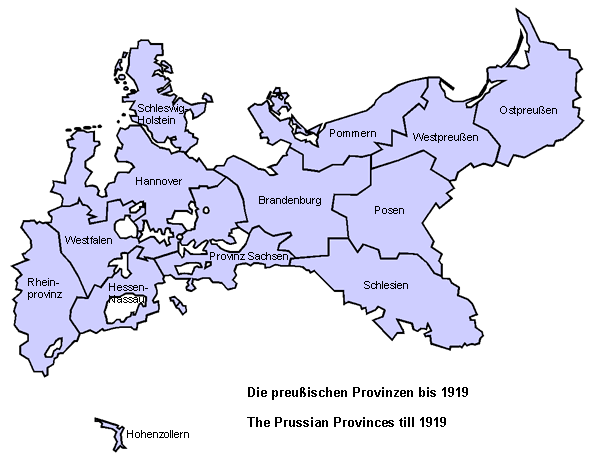
Source: Volker Preuß

Area: 14.976 square miles
Inhabitants: 2.000.000 (guessed) (1866)
Capital: Hanover
Currency to 1858: 1 Taler = 24 Groschen = 288 Pfennige
Currency 1858–1866: 1 Taler = 30 Groschen = 300 Pfennige
Source:
Der Michel,
Volker Preuß

1142 · Henry the Lion of the House of Guelph (Welf) receives Brunswick and the Duchy of Saxony as a fiefdom
1154 · Henry the Lion becomes Duke of Bavaria
1180 · In the conflict with the Staufen Emperor, Henry gets outlawed, in the following struggles Henry subjects and loses all possessions (even Bavaria), except Brunswick and Lueneburg, and some very small areas
1235 · Otto the Child transfersall his possessions back to the Emperor, these become summarized as Duchy of Brunswick and e-transmited to Henry, as the Duke of Brunswick
1269 · The Duchy of Brunswick becomes divided into the Principality of Brunswick and the Principality of Lueneburg, however, it remains formally as Duchy of Brunswick-Lueneburg
1291 · in consequence of further divisions arise, inter alia, the Principality of Calenberg-Goettingen and the Principality of Brunswick-Wolfenbüttel, the Brunswick principalities (except Brunswick-Wolfenbuettel) become united in the following years, and form from 1692 the Electorate of Brunswick-Lueneburg (also called: Electorate of Hanover)
1705 · the Principality of Lueneburg comes to the Electorate of Brunswick-Lueneburg
1714–1837 · personal union with Great Britain, the Elector of Hanover is at the same time King of Great Britain
1792, 1796, 1800 and 1805 · invasions of French revolutionary troops under Napoléon into the German Empire, the German Empire subjects and becomes territorially transformed by Napoléon: church possessions become confiscated, old princely territories become repealed and transferred to other old or new principalities
1st of August in 1806 · the Holy Roman Empire of German Nation ends
18th of August in 1807 · after the Peace of Tilsit Napoléon founded the Kingdom of Westphalia, and transfers it to his brother Jérôme. Therefore the following German states were abolished, fully or partially dispossessed territorially: Electorate of Hesse (Hesse-Kassel), the Principality of Brunswick-Wolfenbüttel, parts of Electorate of Brunswick-Lueneburg, parts of Prussia, parts of Saxony
1810 · the Kingdom of Westphalia annexes the Electorate of Brunswick-Lueneburg, the old Duchy of Brunswick ends
October 1813 · defeat of Napoleon at Leipzig (Battle of Nations 16th to 18th of October 1813)
6th of November 1813 · the Electorate of Brunswick-Lueneburg becomes restored
1814–1815 · Vienna Congress, reorganization of Europe after the Napoleonic era, Brunswick-Lueneburg becomes re-installed
12th of October 1814 · the Electorate of Brunswick-Lueneburg becomes levied as Kingdom of Hanover under King George III., Hanover has to cede the Duchy of Lauenbugr, but becomes enlarged with the territories Emsland and East Friesland and joines the German Confederation
1837 · Death of King William IV, his niece Victoria becomes Queen of Great Britain, his brother Ernst August (the father of Victoria), becomes King of Hanover, the personal union with Great Britain ends
1866 · defeat of Austria and its allies (among them Hanover) in the Fratricidal War against Prussia, overthrow of the Guelph Dynasty (Welfen), Hanover becomes a Prussian province
28th of November in 1913 · decision of the Federal Council: the throne of Brunswick goes to Ernst August of Hanover, until the overthrow of the monarchy on 8th of November 1918
1st of October in 1932 · the District of Schaumburg County becomes separated from the Province of Hesse-Nassau and incorporated into the Province of Hanover
23rd of August 1946 · after the 2nd World War re-foundation as free state
1st of November in 1946 · dissolved into the country Lower Saxony
Source:
Atlas zur Geschichte,
Wikipedia (D),
Wikipedia (D),
Wikipedia (D),
Königreich Hannover

The name "Hanover" tells, that the initial settlement "Honovere" was placed on a "Hohen Ufer" (high bank) of the river Leine.
Source: Handbuch der geographischen Namen







Kindly supported by: A. Kortmann (D) und
Königreich Hannover
![]()

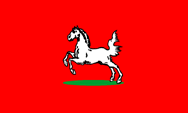

































![]()